Gasoline spill in
groundwater
at a New Jersey Site:
Data analysis and
transport
models
![]()
The gasoline spill of MTBE (Methy tert-butyl ether) and BTEX(Benzene, toluene, ethyl benzene and para-, meta- and ortho-xylenes) from a MOBIL service station at Ewing, New Jersey is studied. The data show that MTBE travels faster than BTEX in the contaminated groundwater. MTBE also travels much further than BTEX in groundwater due to its lower fuel/water partition coefficient. The attenuation of MTBE during the transport is mainly by dilution. The attenuation of BTEX is by adsorption. Transport of MTBE over a distance of 146 meters at the study site took about 2 years. Water level fluctuations affect the concentration of MTBE and BTEX. The measured amount of CO2 and oxygen level in the aquifer is correlated with the concentrations of MTBE and BTEX. The CO2 is the product of respiration of bacteria which is related with the bioremediation process in the aquifer. The higher the CO2 concentration, the higher the MTBE and BTEX. It is believed that BTEX concentration is more responsible to the increase of CO2 concentration in the contaminated aquifer than MTBE at the study site. The simulations of the equilibrium and non-equilibrium transport of MTBE and Benzene by MOFAT are conducted to analyze the material and hydrological factors affecting the transport process. Because of the uncertainty in the input parameters, different scenarios are simulated. The effect of the vertical hydraulic conductivities on the transport is the large. A low vertical conductivity will keep most of the spill in the unsaturated zone while a higher vertical conductivity will have the spill move to the water table and migrate horizontally. Relatively, the effect from the diffusion coefficient is small on the concentration. But the increase of the diffusion coefficient in horizontal direction can move the migration front foreward fast, even though the bulk volume of contaminants stays behind. The simulated concentration plumes outline the migration paths that MTBE and Benzene might take in groundwater during the spill process.
Presentation Pictures
Click in the Box to see an enlarged pciture
|
Picture I |
|
 |
 |
 |
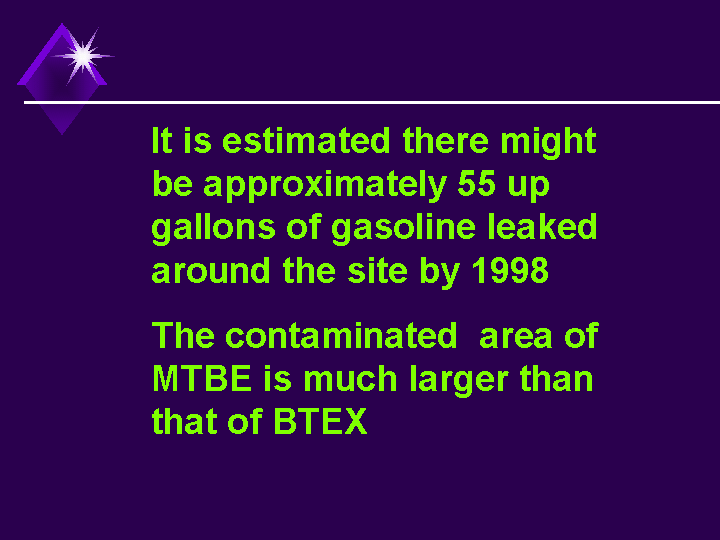 |
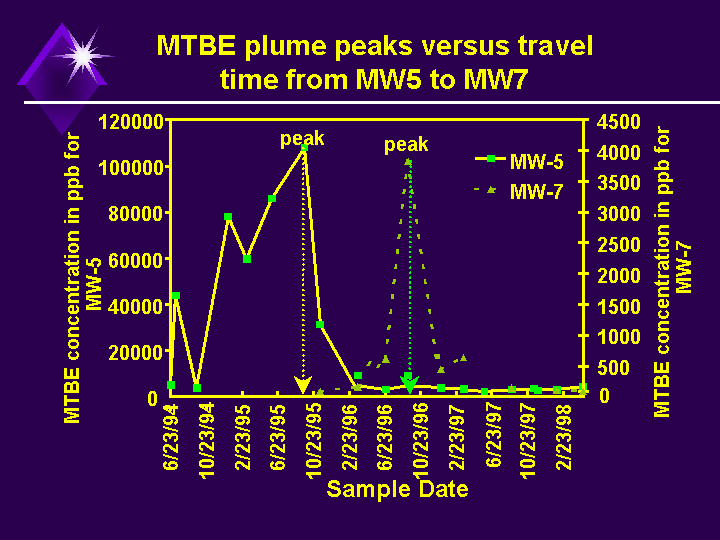 |
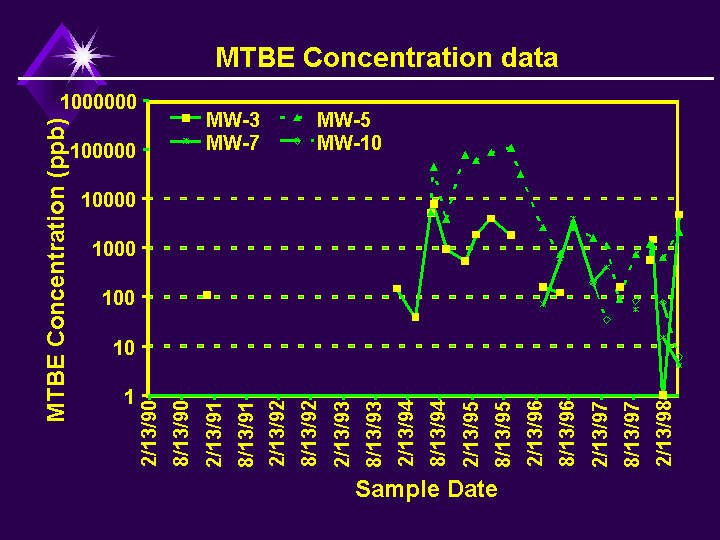 |
 |
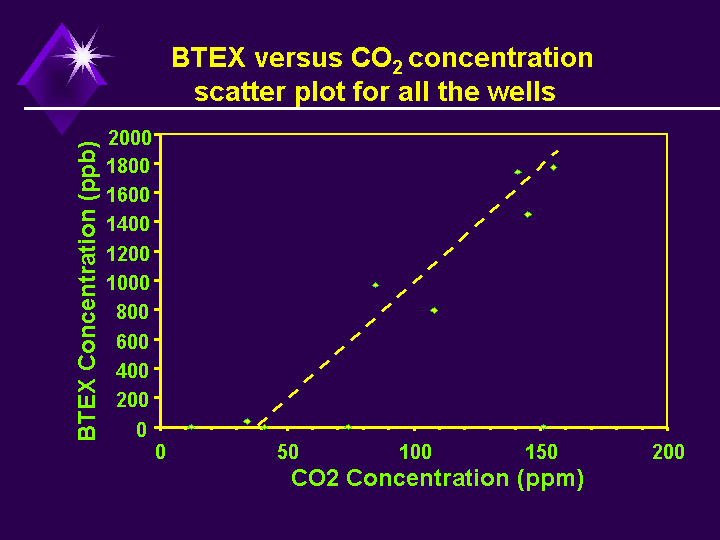 |
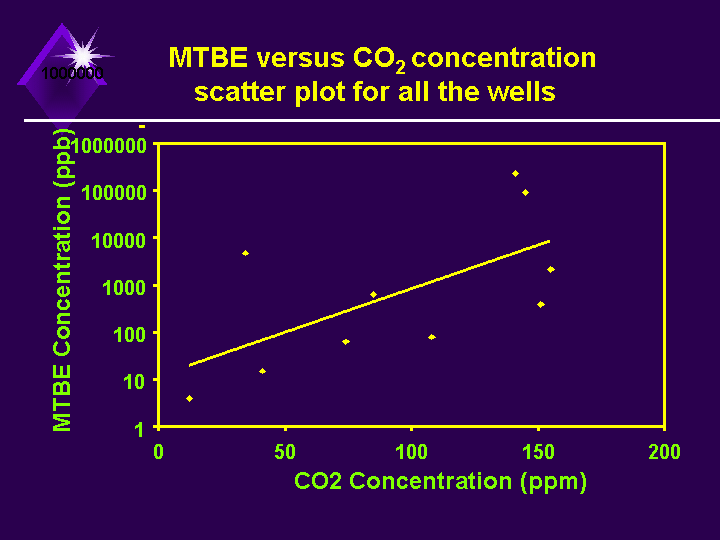 |
 |
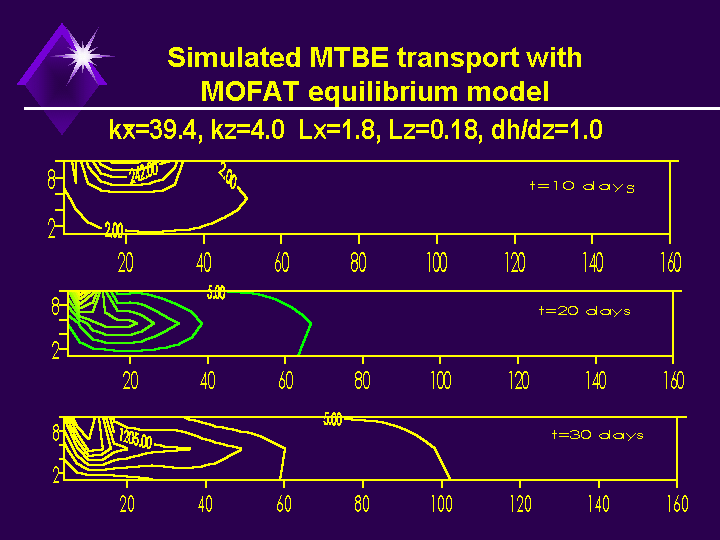 |
 |
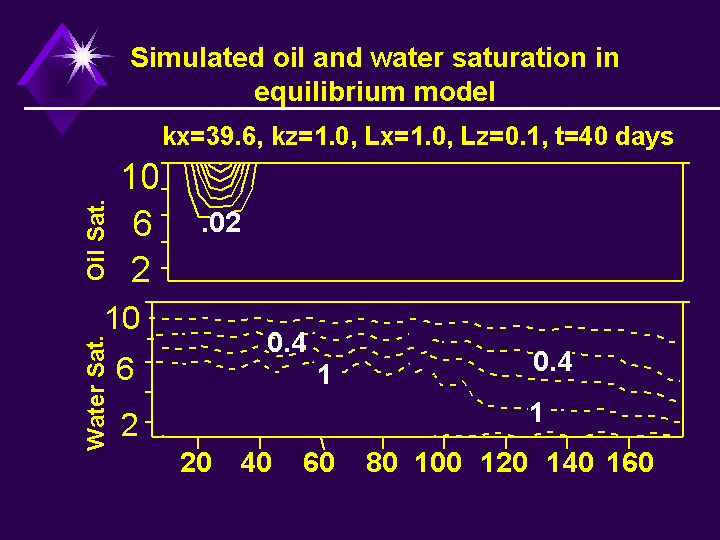 |
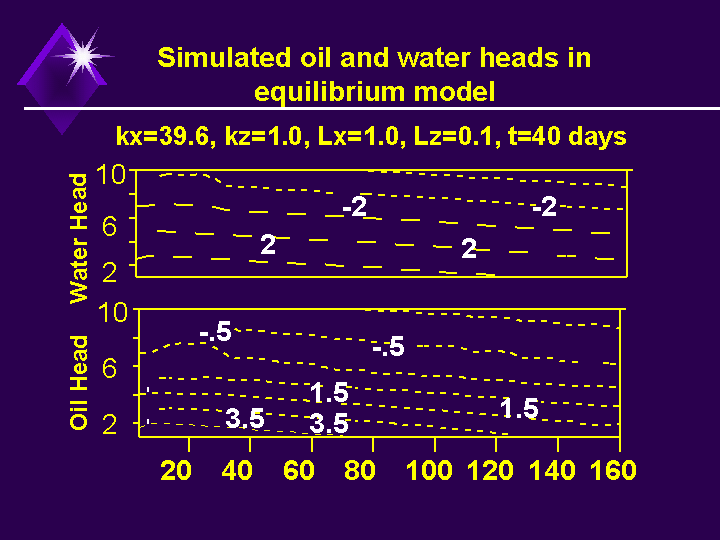 |
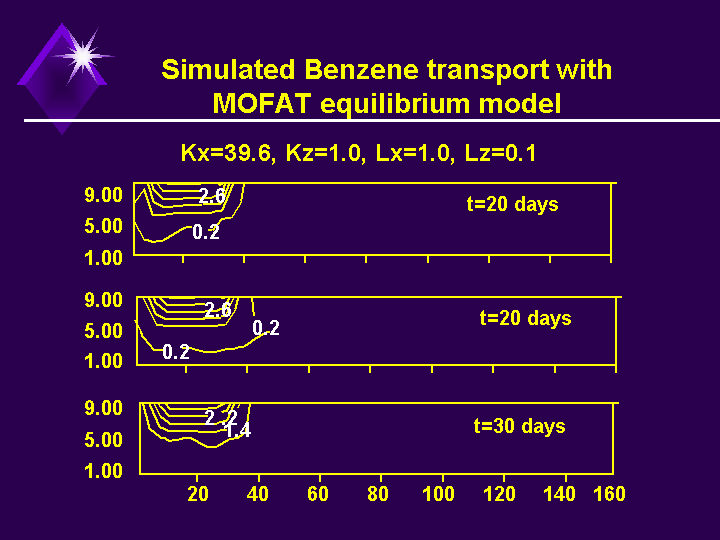 |
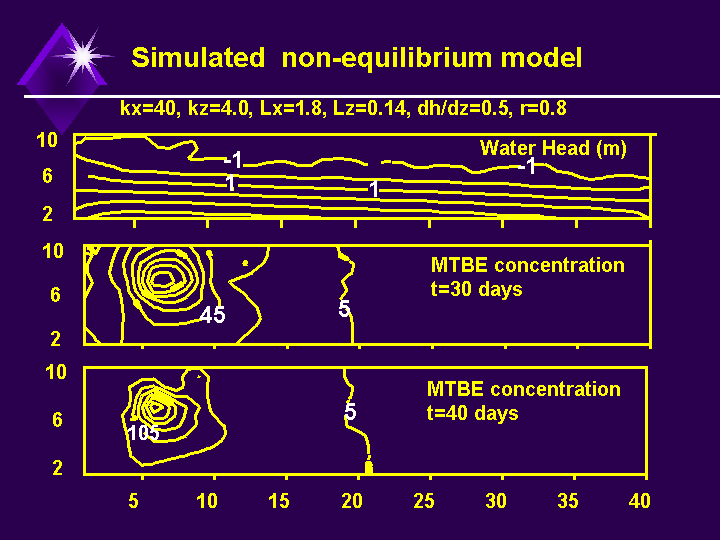 |
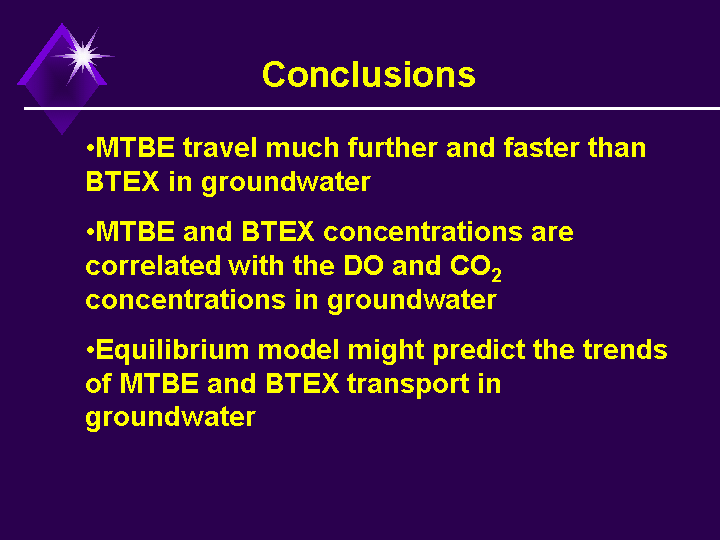 |
Edited 7/24/2004